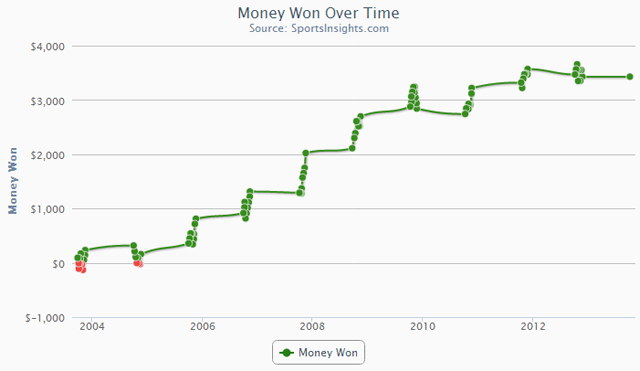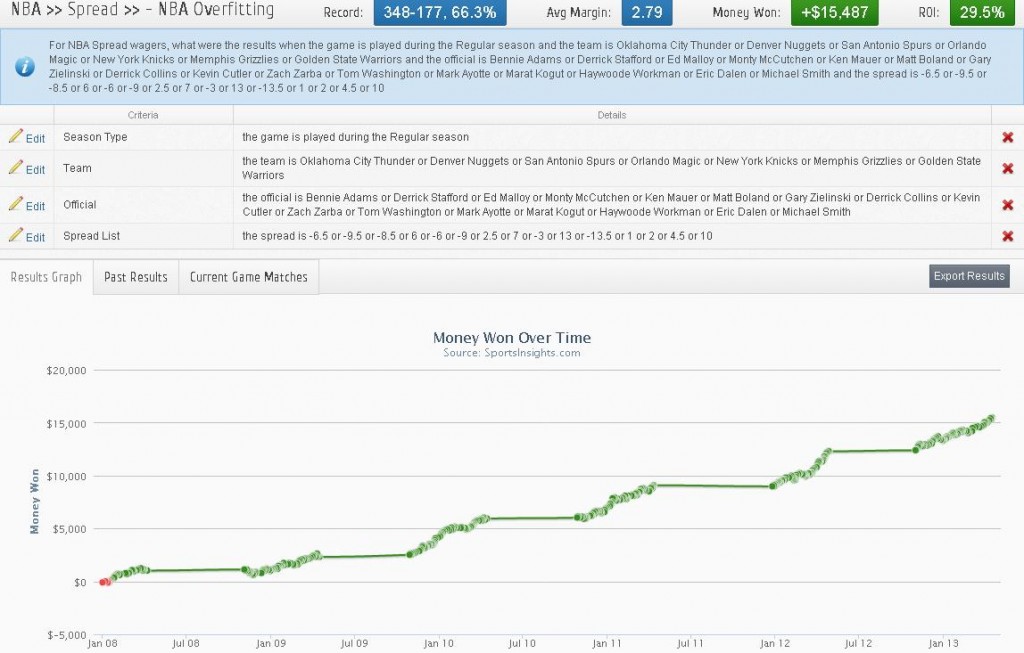
The Dangers of Overfitting Your Sports Betting Systems
If you’re unfamiliar with Bet Labs, it is software that allows users to build robust, data-driven, sports betting systems based on nearly a decade of archived historical betting data. Instead of spending month after month acquiring and poring through spreadsheet data, users can easily select their sport, layer their preferred filters, and create winning systems in a matter of minutes.
We are constantly bombarded with questions regarding what makes a good system. After all, past performance does not necessarily predict future results. This is a sentiment echoed by Nate Silver — renowned for his New York Times FiveThirtyEight blog where he was able to successfully predict the winner of 49 of 50 states in the 2012 Presidential Election. However, Silver’s predictive prowess goes beyond politics and into the sports realm.
In a recent Slate.com article, Matthew Yglesias shares these beliefs and points out a number of important factors in creating systems that can accurately forecast future results. This includes having a large sample size, being open-minded and developing new theories as opposed to buying into widely held public beliefs.
But perhaps the most important factor to consider is not overfitting your betting system. Within Bet Labs there are over 45 different filters, and for each of these filters there are data points with incredibly high winning percentages and units earned. Due to the ease of layering filter after filter, many customers will add 10+ filters while focusing on those top performing data points. As stated in the Slate article, “This often results in over-emphasizing random fluctuations, leading to horrible predictions. In other words, we need some kind of underlying theory to guide our forecast, with the data increasing or decreasing our confidence.”
Essentially, before building your betting system it’s best to have a hypothesis to test because the data itself does not mean anything unless you have reasoning to explain the success of your system.
The betting system displayed below contains some of the factors detailed in our article, “3 Common Characteristics of Winning Betting Systems,” including a large sample size, consistent year-to-year results and a staggering 29.5% return on investment. However, there is no underlying theory to explain why this betting system would be successful. It simply examines the seven most profitable NBA teams since 2008, adds in the most profitable officials in games played by those teams, and arbitrarily selects random profitable spreads as opposed to looking at a range of spreads.
Many people would look at this system and see only the +154.87 units won, but once again it’s worth pointing out that past performance does not always equate to future results. There is no reason to think that any of the seven teams listed above will continue their impressive ATS records, especially considering changes to both player personnel and the coaching staffs.
So what does make a good system? Consistent results, large sample sizes and the ability to explain your edge. In our most recent post, we surmised that Monday Night Football brings extra motivation for good teams to perform well. After adding a few filters to Bet Labs, we found that all favorites had gone 76-63 ATS (54.7%) in MNF contests as opposed to the 49.1% win rate for all other favorites over that time.
This system has a sufficient sample size (139 previous game matches), shows an edge over other similar games, and has an underlying theory to guide our prediction.


No Comments